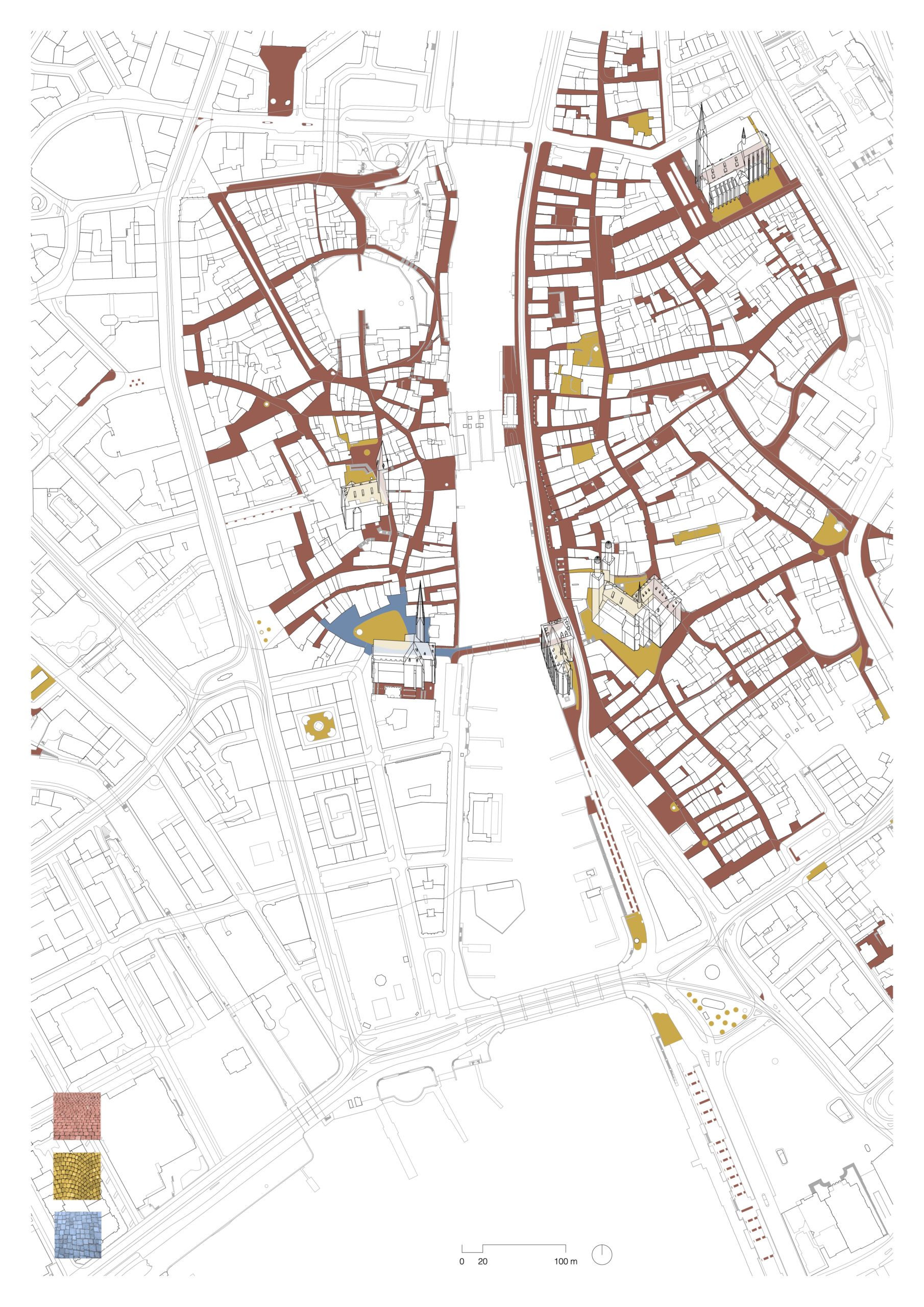The Role of (a) Cobblestone(s) in Zurich
Münsterhof
Münsterhof
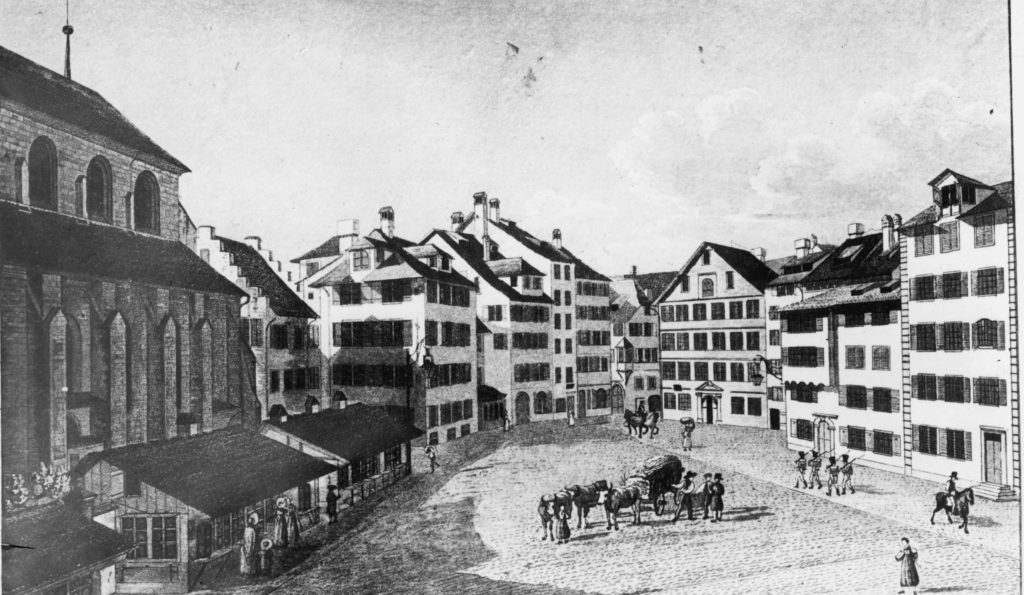
The Münsterhof has had its cobbled ground since 1676 to serve as market square. The use of the public space has changed over the centuries – from a market square, it transformed into a public place where political moments took place, in the twentieth century it was used as a car park, and in 2016 it has again been turned into a pedestrianized zone with Italian flair. This last transformation was undertaken through a refurbishment of the urban ground. The ground material, as a common resource of the city, defines public spaces in its aesthetic, character and use, and influences social practices. Cobblestones have been present in cities since ancient times. It is a continuing traditional craft that still experiences innovation.
The Münsterhof is a great example of an innovative use of cobblestones in Zurich. The medieval cobblestones have been reused, treated at the Guber quarry through a grinding and heating process to become accessible for disabled people. In addition, they were arranged in a new pattern, Passé paving. It is made of stones of four different sizes that makes the ground more comfortable for cyclists, and better-suited to disabled people. The pattern is innovative for Zurich, and has never been seen before in the city.
The production and paving of cobblestones is a handcraft with various facets that have regained importance in current social and political debates regarding global problems. When joined with sand instead of mortar, cobblestones let the ground breathe and water penetrate, contributing to a cooler urban climate, more biodiversity, and lower flood risk.
Cobblestones are often reintroduced to decelerate traffic or to turn a street into a pedestrianized area. There is a collective imagination around cobblestones; one associates different ideas and values with them. The proximity of the human hand to the material – crafting it, processing it, using it, maintaining it, or reusing it – is central to working with cobblestones. Paving a square means taking each stone, and putting it into the sand to create an urban ground. It is the tension between the single entity and its appearance in the wider quantity as urban ground that makes the cobblestone an interesting material to look at. After being paved, it can be extracted from the ground again to be reused, and in the 1980s the cobblestone became a political symbol of force and resistance.
Cobblestones are a circular material because of their durability and modularity; they preserve the historical image of Zurich and influence social practices in urban space, thus making them a ‘material common’ of Zurich.
Petrò, Lorenzo. “Ein nie gesehenes Pflasterstein-Muster in Zürich”. Tages Anzeiger, 08.03.2016 (zuletzt aufgerufen am: 03.10.2022), https://www.tagesanzeiger.ch/ein-nie-gesehenes-pflasterstein-muster-in-zuerich-337890631838?idp=OneLog&new_user=no.
Aktiengesellschaft Steinbruch Guber Alpnach. Steinbruch Guber, Solothurn: Buchdruckerei Vogt-Schild, 1932.
Mentlein, Horst. Pflaster Atlas, 5. Auflage. Köln: Verlagsgesellschaft Rudolf Müller, 2020.
“Kultur statt Parkplatz” – refurbishment in 2016
Christoph Ruckstuhl, 2016, NZZ.
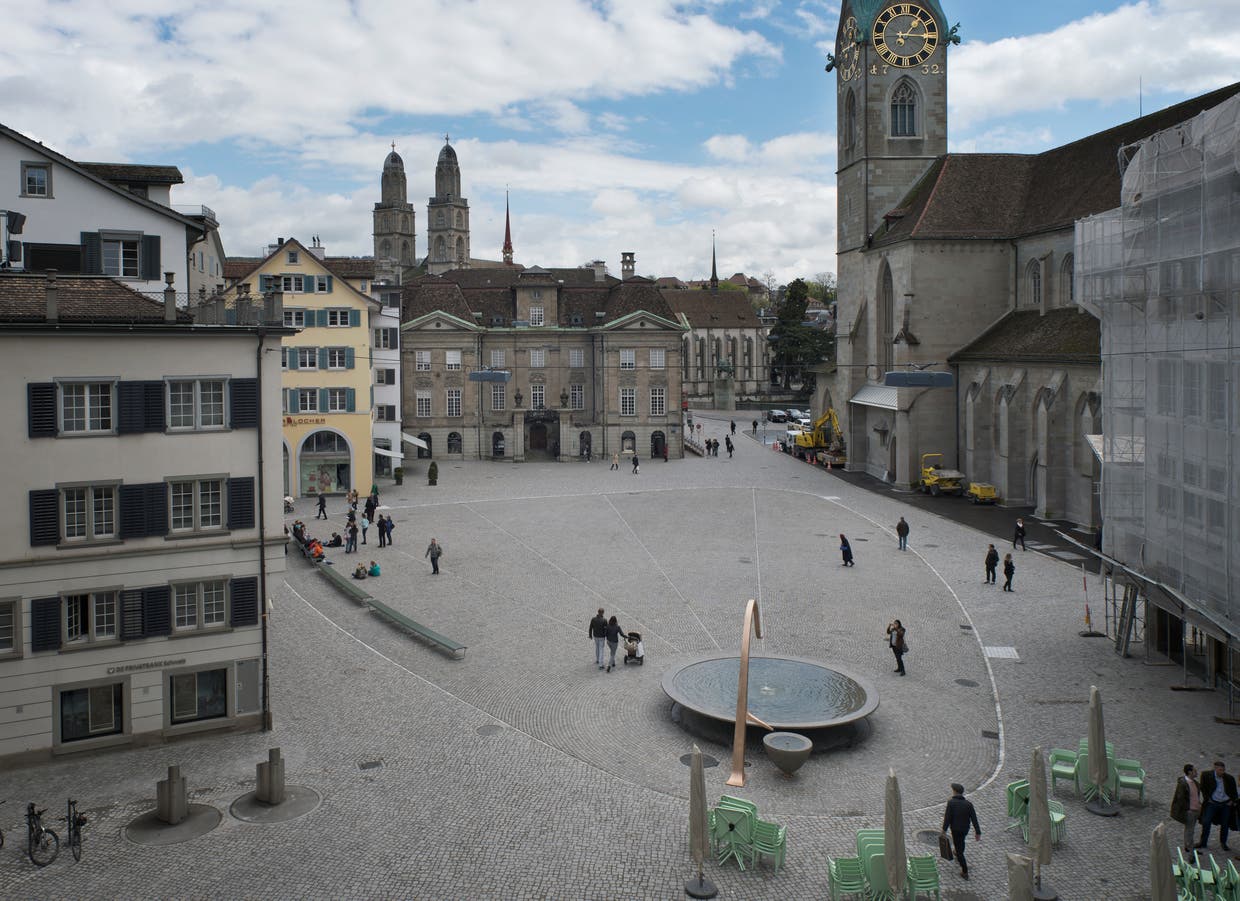
Market Square Münsterhof with Cobblestones since 1676
around 1835, Baugeschichtliches Archiv Zürich.
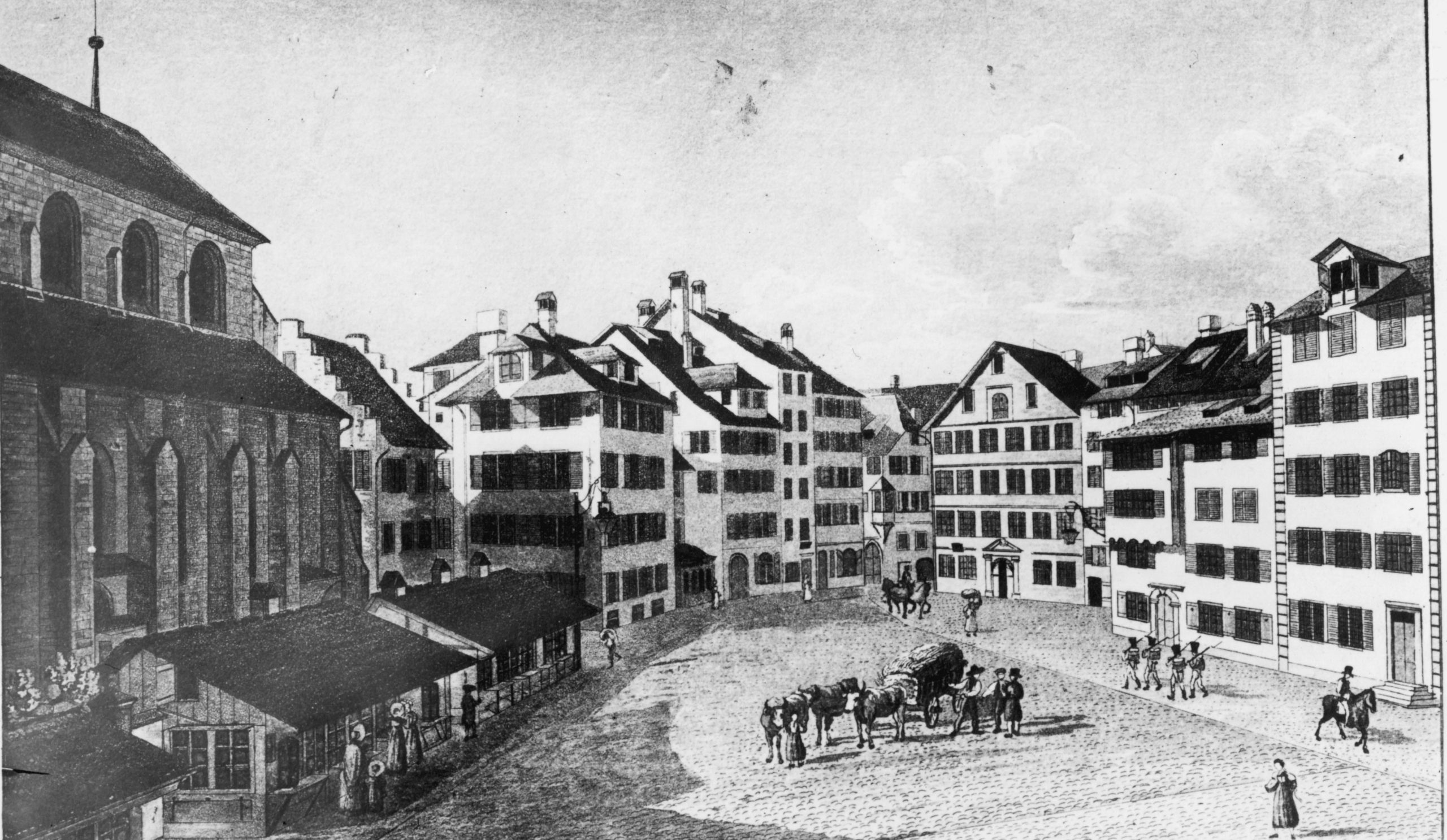
Münsterhof – Aerial View
Comet Photo AG, ca. 1950, E-Pics.
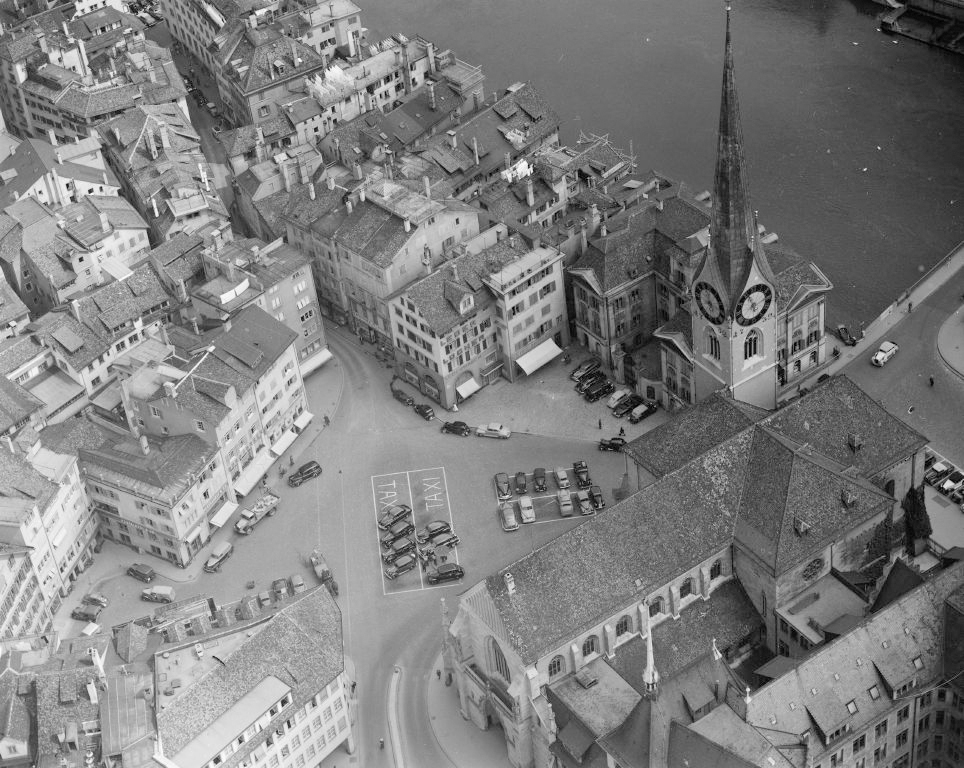
Pavior Laying Cobblestone in Passé Pattern at Münsterhof
Unknown, 2015, Vereinigung Kulturplatz Münsterhof.
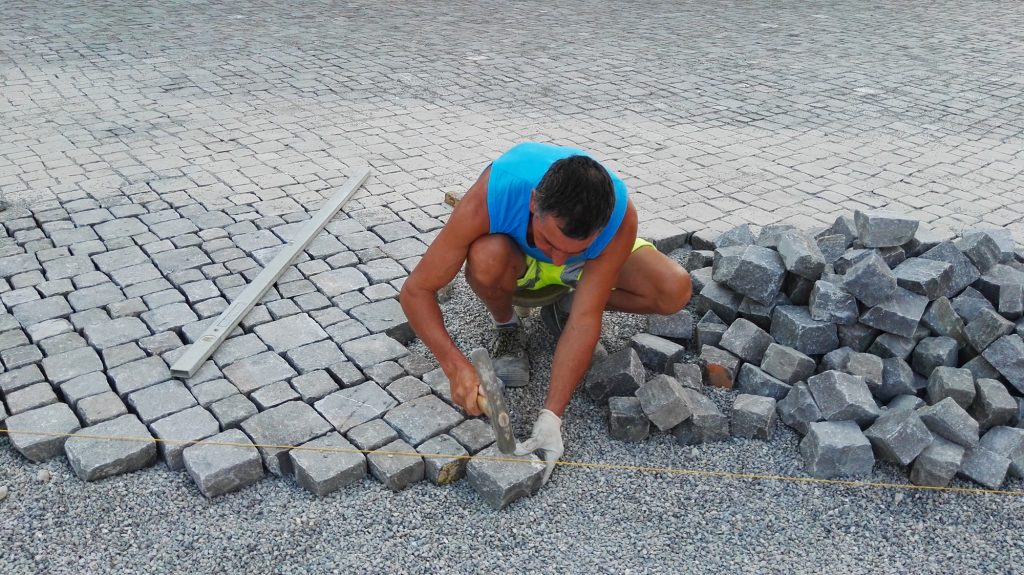
Mapping of Cobblestone Patterns in the Historic Center of Zurich
Unknown, 2015, Vereinigung Kulturplatz Münsterhof.
